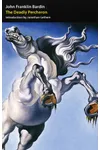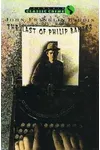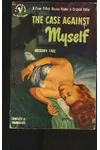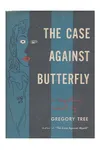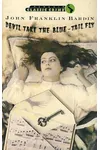Picture a storyteller who spun tales of psychological suspense so gripping they’d keep you up all night—meet John Franklin Bardin! Born in Cincinnati, Ohio, in 1916, this American crime novelist carved a unique niche in the mystery genre with his cult classics like The Deadly Percheron and Devil Take the Blue-Tail Fly. Despite early tragedies and a career that flew under the radar, Bardin’s blend of hard-boiled detective vibes and mind-bending psychology still captivates readers today.
The Making of John Franklin Bardin
Bardin’s early life was marked by heartbreak. Born to a coal merchant father and an office worker mother, he lost his sister to septicemia and his father to a coronary, leaving the family in financial straits. His mother’s struggle with paranoid schizophrenia deeply influenced his writing, particularly the haunting hallucinations in Devil Take the Blue-Tail Fly. After graduating from Walnut Hills High School, Bardin studied engineering at the University of Cincinnati but left to work as a roller-skating rink bouncer and bookstore clerk, where he devoured books and honed his craft.
Moving to New York City in his late twenties, Bardin juggled roles as an advertising executive and creative writing teacher at the New School for Social Research. His literary influences—Graham Greene, Henry Green, and Henry James—shaped his introspective, character-driven approach to crime fiction, setting him apart from the puzzle-heavy mysteries of his era.
John Franklin Bardin’s Unforgettable Stories
Between 1946 and 1948, Bardin unleashed a trio of novels that redefined psychological thrillers. The Deadly Percheron (1946) follows a psychiatrist entangled in a surreal murder plot, its disorienting narrative earning comparisons to a waking nightmare. The Last of Philip Banter (1947) explores identity and paranoia as a man finds mysterious manuscripts predicting his life’s unraveling. Devil Take the Blue-Tail Fly (1948), perhaps his boldest work, dives into the psyche of a pianist grappling with mental illness, inspired by Bardin’s visits to his mother. These novels, initially overlooked, gained cult status in the 1970s, especially among British readers.
Bardin’s style is a heady mix of hard-boiled grit and psychedelic strangeness, often likened to a David Lynch film on paper. He used psychoanalytic concepts to explore identity and madness, creating thrillers that feel both timeless and ahead of their time. Later works, like The Burning Glass (1950) and pseudonymous novels as Gregory Tree, leaned more conventional but retained his knack for compelling characters. His final novel, Purloining Tiny (1978), marked a reflective return to his signature style.
Why John Franklin Bardin Matters
Bardin’s influence lies in his fearless exploration of the human psyche, paving the way for modern psychological thrillers. His novels, reissued in the John Franklin Bardin Omnibus, inspired filmmakers and writers, with The Last of Philip Banter adapted into a 1986 film starring Tony Curtis. His work bridges the gap between Dashiell Hammett’s gritty detectives and Philip K. Dick’s existential dread, earning him a loyal following among mystery aficionados.
Despite his obscurity during his lifetime, Bardin’s legacy endures through his innovative storytelling and the intrigue of his rediscovery. Awards like the Swedish Crime Writer’s Academy Martin Beck Award for The Last of Philip Banter and Devil Take the Blue-Tail Fly in 1976 underscore his lasting impact. His ability to turn personal tragedy into universal narratives makes him a hidden gem worth celebrating.
- Born: November 30, 1916, Cincinnati, Ohio
- Key Works: The Deadly Percheron, The Last of Philip Banter, Devil Take the Blue-Tail Fly
- Died: July 9, 1981, New York City
- Awards: Swedish Crime Writer’s Academy Martin Beck Award (1976)
Ready to get lost in a world of mystery and madness? Snag The Deadly Percheron and dive into John Franklin Bardin’s thrilling universe!
